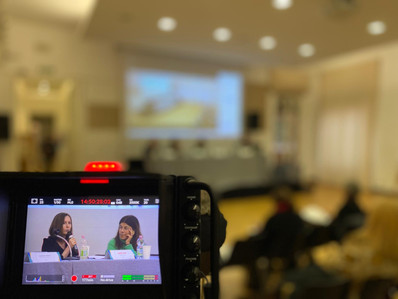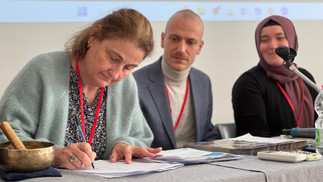Rome, Italy – November 20-21-22 2024 – The third interfaith symposium on protecting places of worship, held in the heart of Rome, brought together religious leaders, scholars, and security experts from across the globe to discuss and collaborate on safeguarding sacred spaces. This event was part of the PROTONE / Harmonising Diversity project, a cross-cultural initiative designed to enhance the security of Jewish, Christian, Muslim, and other places of worship while promoting interfaith dialogue and cooperation. The symposium was organized by Istituto Tevere, an NGO based in Rome focusing on fostering intercultural dialogue, peacebuilding, and security through research and collaborative action, in partnership with Religions for Peace Italia, a branch of the global organization that unites the world’s religious communities to address critical challenges through interfaith cooperation and action and international partners of the Protone Project, Intercultural Dialogue Platform, Arco Forum, House of One, Stiftung Dialog und Bildung, Fedactio, University of Leiden.
The symposium, hosted at Il Pitigliani – Centro Ebraico Italiano, provided a dynamic platform for participants from Italy, Spain, Belgium, the Netherlands, Germany, and beyond. It featured a rich program of discussions, research presentations, and site visits, emphasizing the importance of shared responsibility in protecting sacred spaces across diverse faiths.
Day One: Research Insights and Interfaith Collaboration
The event began on November 20th with a study tour exploring both historical and contemporary places of worship in Rome. This was followed by the presentation of the findings of a comprehensive research report on the security of places of worship, led by Professor Tahir Abbas from the University of Leiden. His findings sparked insightful discussions among experts, with contributions from various religious and cultural leaders including Professor Fiorella Kostoris of Sapienza University and representatives from the Bahá'í, Jewish, Christian, Muslim and Hindu communities.
During the panel “Glocal Reflections on the Places of Worship” speakers such as Michael Driessen from John Cabot University and Johann Hafner from the University of Potsdam addressed topics ranging from transnational interfaith cooperation to the intersection between memory and present while constructing a new places of worship according to emerging urban needs, as in the case of House of One in Berlin.. These discussions highlighted the importance of a "glocal" approach to religious site security—one that balances local traditions with broader, international efforts.
Other major discussions included the role of media and journalism in shaping perceptions of religious security and the integration of security measures in architectural design. Speakers such as Francesca Baldini, a journalist who mainly covers interfaith events, and Tehseen Nisar Hussain from COPAIR, explored how media narratives impact public understanding and the potential for fostering interfaith peace through careful representation as well as the role of religion in the public sphere. In addition, a panel of academics from various institutions discussed the balance between preserving cultural heritage and implementing modern security measures.
Day Two: Securing Sacred Spaces Together
The second day of the symposium continued with the formation of the Interfaith Council for Peace and Security. This new body, composed of Jewish, Christian, Muslim, Buddhist, Hindu, Sikh, and Bahá'í representatives, aims to provide an ongoing platform for collaboration on safeguarding religious sites globally. Although significant, this was just one part of a packed agenda focused on tangible solutions to security challenges faced by religious communities.
Site Visits: Engaging with Rome’s Sacred Spaces
A central feature of the symposium was its itinerant symposium, which allowed participants to engage directly with Rome's sacred spaces and understand the security challenges faced by different religious communities. On November 21st, participants visited the Buddhist Zen Center, Bahá'í Center, Hindu Temple, and the Torpignattara Muslim Centre, witnessing firsthand how these faith communities incorporate security measures into their sacred sites.
The final day of the symposium, November 22nd, continued with more visits, focusing on Rome’s rich and diverse religious heritage. Participants explored the Jewish Neighborhood, the Great Synagogue and Jewish Museum of Rome, and the Basilica of San Bartolomeo all’Isola, reflecting on the complex layers of history and security that these spaces represent. For Muslim participants, there was also an opportunity to attend Friday prayers at the Islamic Cultural Centre of Italy, reinforcing the symposium’s commitment to inclusivity and understanding across religious lines.
Looking Ahead
As the symposium came to a close, it was clear that the protection of places of worship requires not only physical measures but also a deep commitment to cross-cultural understanding and cooperation. Through discussions with scholars, faith leaders, and security experts, attendees gained valuable perspectives on how to balance security with respect for religious and cultural practices.
The symposium’s diverse approach—incorporating academic research, interfaith dialogues, and immersive site visits—underscored the need for a holistic strategy in safeguarding sacred spaces. The discussions and actions of the past few days will continue to shape efforts in protecting places of worship, ensuring they remain safe havens for worshippers of all faiths.





















Comments